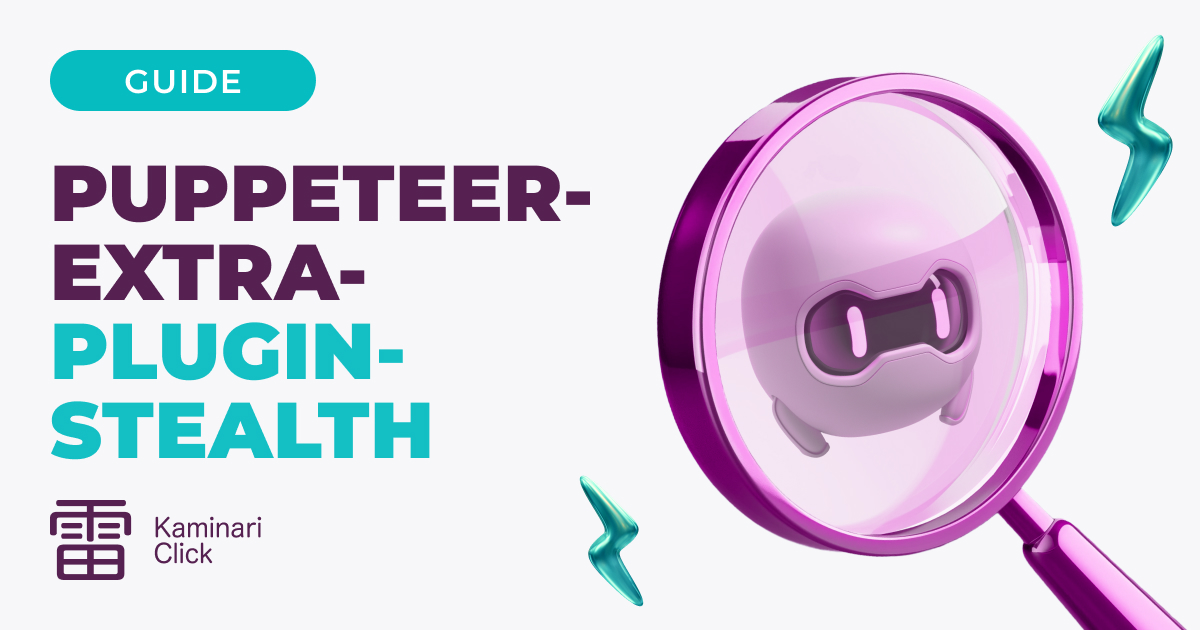Understanding Headless Chrome
Since 2017, a new type of browser, which does not visually display web pages but operates in the background, has become a significant tool in the world of internet technology. This browser, known as Headless Chrome, is used for both beneficial and malicious purposes. For instance, it can automatically check how various sites are working (known as "automated testing") and participate in ad fraud by generating fake clicks and views.
At Kaminari Click, we pay special attention to detecting "bot traffic" — where programs, not people, perform actions on the internet. We are particularly interested in programs using sophisticated methods like Puppeteer-Extra-Plugin-Stealth to hide their activities. This article explains how such browsers work, the threats they pose to internet security, and how our innovative methods help protect businesses from these threats.
What is a Headless Browser?
A headless browser is a type of web browser that operates without displaying pages on a screen. Instead of visually rendering pages like a regular browser, it works in the background. This is very useful for automating various internet tasks, such as checking the functionality of websites or gathering information from different resources without anyone physically sitting and clicking on links.
Use Cases for Headless Browsers
1. Website Testing: Developers use these browsers to automatically check if a website is functioning correctly. This allows for quickly ensuring everything works as it should without manually checking each page.
2. Data Scraping: These browsers can automatically navigate web pages, collecting necessary information such as prices or product descriptions.
3. Ad Fraud: Some use these browsers to create fake clicks on ads to earn money illegally.
Why is This Important?
While headless browsers can be very useful, they can also be used for fraudulent purposes. This means special security measures are needed to prevent abuse and protect honest users and businesses from losses. At Kaminari Click, we are developing solutions to use these technologies correctly and safely.
Puppeteer and Its Role in Headless Browsers
Puppeteer is a tool that helps programmers control the Headless Chrome browser. It is very convenient for automating various internet tasks, such as checking how a site works, creating screenshots of pages, or automatically collecting information from different sites without needing to open the browser manually. Puppeteer allows programs to perform actions in the browser as if a human were doing them: clicking buttons, entering text, and so on. This makes Puppeteer invaluable for those developing and testing websites, optimizing sites for search engines, or handling routine data processing.
Puppeteer has an extension called Puppeteer-Extra, which adds new features through a plugin system. One such plugin, Stealth Plugin, helps hide the use of programmatic automation to make browser actions look as natural as possible. This is important for tasks where it should not be visible that a program is performing them, such as collecting information from sites that block automated access.
However, this plugin can be used for both good and bad purposes, such as ad traffic manipulation. Therefore, developers should use such powerful tools responsibly and work on ensuring these technologies are not abused, maintaining security and reliability in the digital world.
The Complexity of Detecting Headless Chrome
Detecting headless browsers can be quite challenging. Typically, this involves checking certain system settings, such as the presence of a special flag (called "navigator.webdriver"), which indicates that the browser is being controlled automatically rather than by a human. However, with tools like Puppeteer-Extra-Plugin-Stealth, detection becomes much harder.
There are more subtle differences between normal browser use and programmatic control that can only be identified through advanced methods. For example, analyzing how pages are loaded and processed or what actions are performed on the page can help determine if Headless Chrome is being used.
To more effectively detect the use of such hidden browsers, it is important to develop new technologies and methods that can track and adapt to new masking techniques. These methods may include using machine learning to analyze behavior on web pages and stricter checks for suspicious actions, enabling more effective combat against digital abuse.
Techniques for Detecting Puppeteer-Extra-Plugin-Stealth
At Kaminari Click, we use several proven methods to detect and prevent the use of Puppeteer-Extra-Plugin-Stealth. Here are the main ways we do this:
These methods help us ensure protection against hidden automated influences, guaranteeing the security and integrity of our clients' systems. We continuously update our approaches and tools to stay ahead in the ever-changing world of cybersecurity.
Results of Our Work
We regularly release reports on the number of blocks, demonstrating how our system helps prevent fraudulent activity. These data confirm that our technologies contribute to reducing fraudulent operations.
Impact on Proxy Use
We also detect how bots use so-called "residential proxies" to hide their actions. Our method allows us to recognize such activities and prevent them. This example highlights our expertise in cybersecurity and our ongoing work to protect online security for all our clients.
Conclusion
Recognizing the importance of combating advanced bots like Puppeteer-Extra-Plugin-Stealth today, our team at Kaminari Click is effectively working on improving our technologies and methods. Our goal is to always stay one step ahead in this ongoing battle against automated actions and internet fraud. By enhancing our detection systems, we not only protect our clients but also help maintain the security of the entire digital advertising industry and internet transactions.
This comprehensive approach allows Kaminari Click to remain a leading company in fraud prevention, ensuring a safe online experience for all our users.

